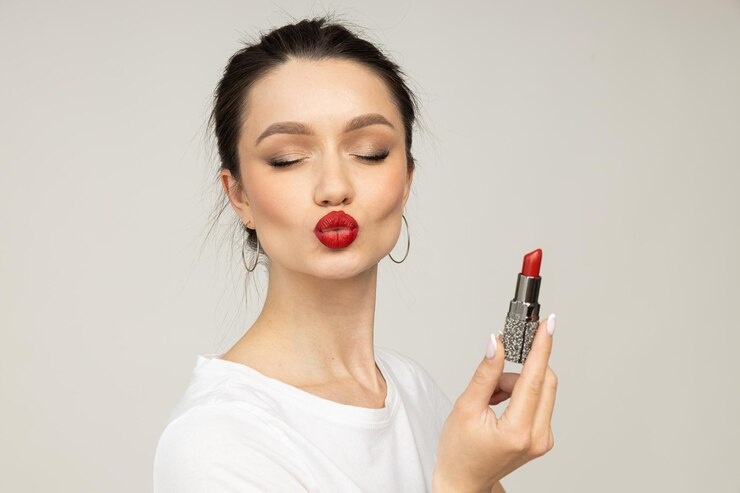Lipstick Guide: Tips for Choosing the Perfect Shade for Every Skin Tone
Lipstick has long been more than just a cosmetic—it is a symbol of expression, confidence, and style. Across cultures, lipstick shades have represented fashion trends, social identities, and even empowerment movements. With hundreds of shades and finishes available today, choosing the right lipstick can feel overwhelming, especially for beginners. The core idea of this guide is to simplify the process by exploring how skin tones, undertones, and lipstick finishes interact, making it easier to select a flattering shade.
Importance: Why Lipstick Selection Matters
Lipstick plays an important role in personal style and presentation. The right shade can:
-
Enhance natural beauty by complementing the skin tone.
-
Create different moods, from bold and dramatic to soft and natural.
-
Support professional or social occasions, aligning appearance with the event.
-
Build confidence, as people often feel more polished when wearing a suitable shade.
This topic is relevant to makeup enthusiasts, beginners exploring beauty products, professionals working in fashion and media, and anyone looking to understand the basics of color matching. Choosing the wrong shade often leaves people feeling unsure, but with proper knowledge, lipstick selection becomes easier and enjoyable.
Recent Updates: Lipstick Trends in 2024–2025
The lipstick market continues to evolve with changing preferences:
-
Neutral tones are rising in popularity (2024–2025): Soft nude, beige, and mauve shades remain widely used for daily wear.
-
Bold reds and berries making a comeback: Many global fashion weeks in 2024 showcased rich red shades as a statement piece.
-
Skin-tone inclusive collections: Major brands in 2024 expanded shade ranges to better match deeper and varied skin tones.
-
Sustainability focus: Growing demand for vegan, cruelty-free, and eco-friendly lipstick packaging is shaping the industry.
-
Hybrid lip products: In 2025, tinted balms and lip oils gained traction, offering color while nourishing lips.
These shifts reflect not only fashion trends but also consumer priorities around inclusivity and sustainability.
Laws or Policies: Regulations Around Lipstick
Lipstick, like other cosmetics, is regulated by government health and safety authorities to protect consumers. Regulations vary by country:
-
United States (FDA): The Food and Drug Administration ensures that lipsticks use only approved color additives and safe ingredients.
-
European Union (EU): The EU Cosmetics Regulation (EC) sets strict rules on ingredient safety, labeling, and animal testing bans.
-
India (BIS & CDSCO): The Bureau of Indian Standards (BIS) regulates quality, while the Central Drugs Standard Control Organization oversees compliance.
-
Global animal testing policies: Many countries, including those in the EU, India, and Australia, have banned or restricted cosmetic animal testing.
Consumers are advised to check labels for compliance, ingredient safety, and allergy risks.
Tools and Resources: Helping You Pick the Right Lipstick
Several resources can simplify the process of selecting the right shade:
-
Virtual try-on apps:
-
L’Oréal Virtual Try-On
-
Sephora Lipstick Virtual Artist
-
Maybelline Virtual Try-On
-
-
Shade-matching websites:
-
Temptalia’s Lipstick Matrix
-
Findation (helps match shades across brands)
-
-
Color analysis tools:
-
Skin undertone calculators (available on beauty blogs and cosmetic sites)
-
Printable shade charts showing undertone vs. shade matches
-
-
General tips for beginners:
-
Keep one neutral/nude shade for daily wear.
-
Have a bold red or berry for special occasions.
-
Test shades in natural lighting for accuracy.
-
Choosing Lipstick Shades for Different Skin Tones
| Skin Tone | Undertone | Best Shades | Avoid |
|---|---|---|---|
| Fair / Light | Cool | Pink, berry, mauve, blue-toned reds | Very pale nudes (wash out the face) |
| Medium / Olive | Warm | Coral, peach, brick red, warm nudes | Shades too icy or pastel |
| Tan / Caramel | Neutral | Rose, plum, caramel nudes, deep corals | Extremely light beiges |
| Deep / Dark | Cool & Warm | Bold reds, burgundy, chocolate, deep berries | Pale nudes without liner |
This table serves as a starting point—individual preference and comfort matter more than rigid rules.
FAQs
Q1: How do I know my skin undertone for lipstick selection?
Check your veins under natural light: green veins usually indicate warm undertones, blue/purple veins suggest cool undertones, and a mix means neutral undertones.
Q2: What lipstick finish is best for beginners?
Cream or satin finishes are easiest to apply and comfortable for daily wear. Matte lipsticks can be long-lasting but may feel dry for beginners.
Q3: Can the same lipstick look different on two people?
Yes. Skin tone, undertone, and natural lip color all affect how a shade appears. Always test or use virtual try-on before purchase.
Q4: Are dark shades suitable for light skin tones?
Yes, dark shades like wine or plum can create a bold statement on lighter skin tones. It depends on personal style and occasion.
Q5: How can I make lipstick last longer?
Prep lips with balm, use a lip liner, apply lipstick in layers (blot in between), and finish with a light dusting of translucent powder.
Conclusion
Lipstick is both a beauty tool and a personal statement. Choosing the right shade depends on understanding skin tones, undertones, and finishes rather than simply following trends. With inclusive options and digital tools now widely available, finding the perfect match has never been easier. While general guidelines—like warm shades for warm undertones—are useful, personal comfort and confidence are the most important factors.
Whether someone is selecting their first lipstick or experimenting with bold colors, knowledge of shades, textures, and finishes helps turn lipstick from a simple cosmetic into a powerful tool of self-expression.